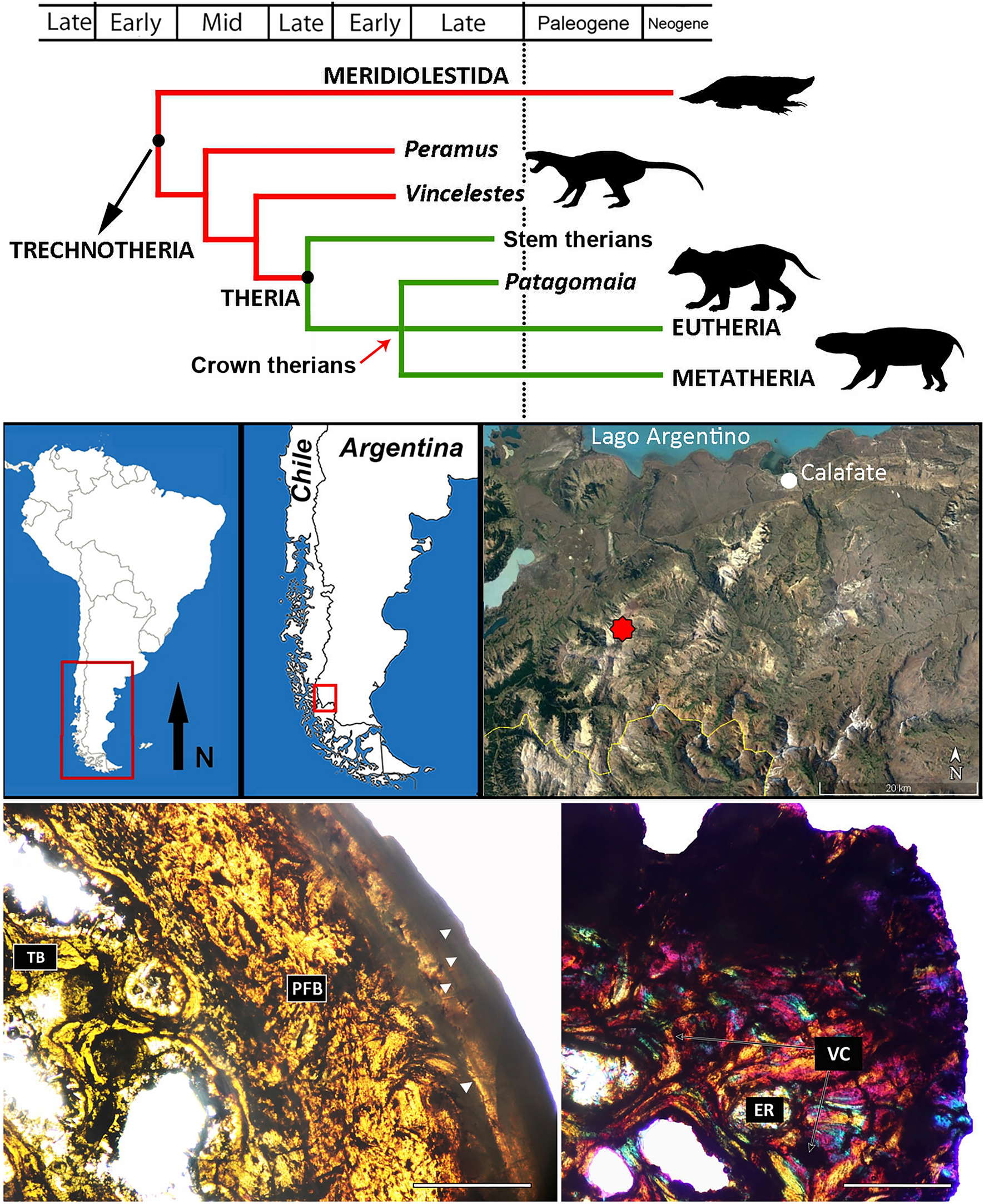In the Cretaceous Period, dinosaurs were big, and mammals were small. At least, that’s been the general view – until very recently, when a slew of larger ancient fuzzies started turning up in the fossil record. None, however, come anywhere close to the size of Patagomaia chainko: a brand-new Late Cretaceous mammal reckoned to have possibly weighed as much as 26 kilograms (57 pounds).
Discovered in southern Patagonia, South America, the new species is represented by just fragments of its hindlimb and pelvis. Nevertheless, that’s enough for experts to estimate its size and likely general appearance: “Estimates of the body mass of Patagomaia were made by taking measurements of the postcranial remains,” the researchers write, “using regressions that have already been used in other fossil mammals.”
The verdict: the remains “belong to a medium-sized mammal, comparable in size to […] the canid Lycalopex culpaeus,” the team determined. That’s the Latin name for the culpeo, or Andean fox – though it’s actually more closely related to a wolf or a jackal than a real fox – or to put it another way: P. chainko was larger than a red fox, but smaller than a coyote.
That may seem at odds with the 26-kilo estimate. There’s a good reason for that: it’s a maximum weight, rather than an average or likely one for the species. In fact, the team write, “we estimated a body mass of ~ 14 kg [30.8 pounds] for the holotype specimen,” which they think “likely represents the maximum ones that this animal could have reached.”
That, however, is still highly noteworthy. Most Northern Hemisphere mammals from the era have a body mass below 100 grams (0.22 pounds), they point out, with 99 percent not even reaching 1 kilogram (2.2 pounds). Even the largest previously known species from the period – the Early Cretaceous Repenomamus and the Late Cretaceous Vintana – topped out at roughly 10 and 8.9 kilograms (22 and 19.6 pounds) respectively.
Based on the specimen’s femur, tibia, hips, and hip sockets, the researchers were also able to gather a few clues about the animal’s potential form. It doesn’t seem to have much in common with monotremes such as the platypus, for example, though it shares some similarities with badgers and porcupines.

Cladogram showing the phylogenetic affinities of Patagomaia chainko, geographic location, and paleohistological images; Map showing the fossil locality; Transverse section of the femur (left); tibia (right) in polarized light with lambda compensator.
In total, the creature is undoubtedly a therian mammal: its remains show a wide range of features that practically always turn up in other known examples of the class, and virtually never outside of it. Overall, however, the creature is fairly unique, even for its time – and not only because of its size.
“Although Patagomaia reveals therian affinities, it differs from Paleogene South American representatives of this clade,” the researchers note. “In sum, Patagomaia does not exhibit morphological features that may ally it with any of the mammalian clades […] frequently recorded in Cretaceous and early Paleogene beds from South America.”
“This new discovery demonstrates that Late Cretaceous mammalian faunas from South America were taxonomically diverse, not only including gondwanatherians, dryolestoids and monotremes, but also early therians,” the team concludes. “Patagomaia also reveals that the evolution of large body size among Late Cretaceous mammals was more complex than previously understood.”
The paper is published in the journal Nature Scientific Reports.
Source Link: Newly Discovered Cretaceous Mammal Was An Absolute Unit